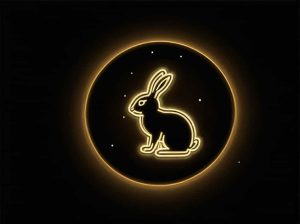Procyon B is a fascinating white dwarf star that orbits Procyon A in the Canis Minor constellation. While Procyon A is bright and easily visible to the naked eye, Procyon B is much dimmer and requires a telescope to be observed. One of the key characteristics of Procyon B is its luminosity, or the amount of energy it emits compared to the Sun.
Understanding Procyon B’s luminosity helps astronomers learn more about white dwarfs, stellar evolution, and the future of our own Sun.
Basic Characteristics of Procyon B
- Type: White dwarf
- Spectral Classification: DQZ (carbon-rich white dwarf with metal absorption lines)
- Mass: 0.6 solar masses (about 60% the mass of the Sun)
- Radius: 0.01 solar radii (roughly the size of Earth)
- Temperature: 7,740 K
- Distance from Earth: 11.46 light-years
- Orbital Period: 40.8 years (around Procyon A)
Approximate Luminosity of Procyon B
Procyon B has an extremely low luminosity compared to its former state as a main-sequence star. Its luminosity is approximately 0.00049 times the luminosity of the Sun (L☉). This means it emits only 0.049% of the Sun’s energy output.
Why Is Procyon B So Dim?
Despite its high temperature (7,740 K), Procyon B’s small size means it has very little surface area to radiate energy. White dwarfs no longer undergo nuclear fusion, so their brightness comes from leftover thermal energy that slowly fades over billions of years.
Comparing Procyon B’s Luminosity to Other White Dwarfs
-
Sirius B (companion to Sirius A)
- Luminosity: 0.0025 L☉
- Brighter than Procyon B due to higher mass and temperature.
-
Our Sun (Future White Dwarf Stage)
- After the Sun exhausts its fuel, it will shrink into a white dwarf with a luminosity of about 0.0001 L☉.
-
Typical White Dwarf
- Most white dwarfs have luminosities between 0.0001 to 0.01 L☉, making Procyon B a relatively average white dwarf.
Why Is Procyon B Important in Astronomy?
1. Understanding Stellar Evolution
Procyon B was once a main-sequence star, much like the Sun, but it exhausted its nuclear fuel and collapsed into a white dwarf. Studying it provides insight into what will happen to the Sun in 5-7 billion years.
2. Testing Einstein’s General Relativity
Because Procyon B is a compact and dense object, its gravitational field bends light, which has been used to test gravitational redshift, a key prediction of Einstein’s theory of general relativity.
3. White Dwarf Cooling Theory
Procyon B helps astronomers refine models of how white dwarfs cool over time, which in turn helps determine the age of the Milky Way galaxy.
How Was Procyon B’s Luminosity Measured?
Measuring the luminosity of Procyon B is challenging because it is much dimmer than Procyon A, which outshines it significantly. Astronomers have used:
- Hubble Space Telescope: To isolate its brightness from Procyon A.
- Adaptive Optics and Interferometry: To refine its physical properties.
- Astrometric Studies: To analyze its orbit and mass, which helps calculate its luminosity.
What Will Happen to Procyon B in the Future?
Unlike massive stars that explode as supernovae, Procyon B will gradually cool down over billions of years. It will eventually become a black dwarf, a cold, dead remnant that no longer emits light. However, since the universe is only 13.8 billion years old, no black dwarfs exist yet.
Procyon B is a low-luminosity white dwarf, emitting only 0.00049 times the Sun’s energy. Despite its dim appearance, it holds great importance in astronomy, helping scientists study stellar evolution, white dwarf cooling, and general relativity. As Procyon B continues to fade over time, it serves as a preview of our Sun’s distant future.



